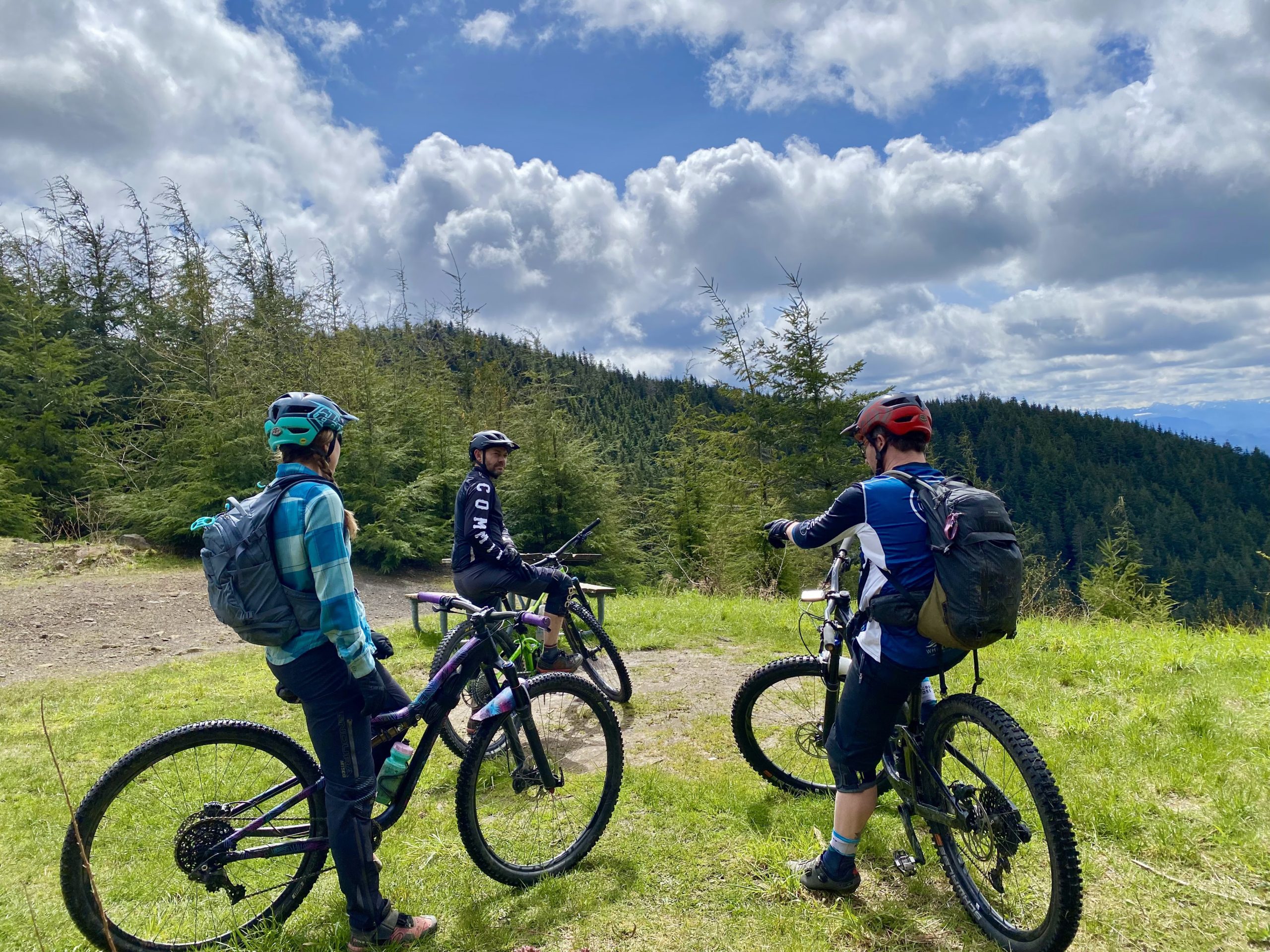July 22, 2022
Technique and fitness get the bulk of our preparation and practice with mountain biking but being prepared for the ride with the correct gear is essential for safe and successful adventures. Let’s talk about the key items to pack before hitting the trail.
We break it down into 3 exposure categories, The Quicky, The Big Ride and The Epic. For each ride exposure, you need to consider both Self Care and Bike Care. You could haul the Epic kit on every ride and be covered, but it’s nice to lighten the load when it is a smart plan.
Pack your cellphone!
Your phone is a valuable tool on the bike. Always:
- Charge your phone.
- Get Trailforks. Use the paid version as the free is incomplete. Also, make sure you have your regions downloaded. When you are out of cell range, the GPS on most phones will keep your navigation on point. There are other options like Gaia, Fat Map, MTB Project, etc. We have found Trailforks to have the most comprehensive list of sanctioned trails and has enough user base that most trail locations have frequent trail reports. In addition to routes and maps, there is a useful “Emergency Info” with the local emergency number and your current location.
- While not necessary, who doesn’t want some plant and animal identification apps. Two very good apps are “Picture This” for plants, “Merlin” for birds.
The Quicky — I can walk back to my car Ride.
Some rides are short in duration and don’t require the big pack. These are rides you could safely walk back to the car in a pinch and are able to call your emergency contact.
The Pack — Endless options, but most would agree the hip pack is ideal for the quicky. You can always use your Epic ride pack but using the hip pack is so comfortable when it works.
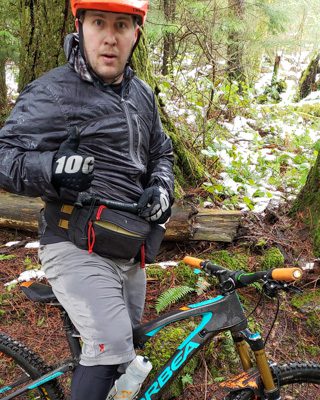
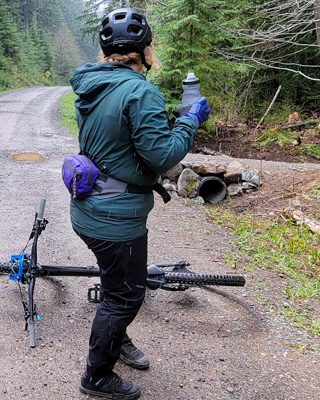
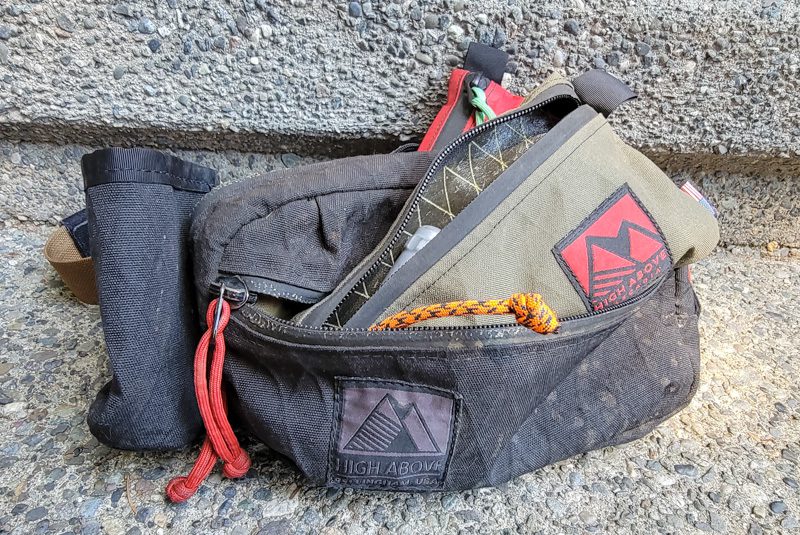
Self Care
- Water – pre-hydrate and carry 2L for most rides under 1.5 hours. For a ride lasting 1 hour, a bottle on the frame is perfect. Consider an electrolyte tab if you need the salt.
- Food – Ride after you have been fed then grab a couple bars you like and 1 you don’t. Pick calorie dense options like Clif Bars or ProBars. The bar you don’t like is a great backup. If you have space for any “real” food like a sandwich or fruit, your body will be much happier, but it’s not always the ideal option due to space.
- Small first aid kit – basics are always important. You are likely going to get some small cuts when riding. Plan enough to clean and dress in case the wound is in a location you need like your palms. It’s also a good idea to pack ibuprofen and an antihistamine if you have stinging insects or plants. Don’t forget latex free gloves in case you are helping someone else.
- Clothing – Have an extra layer, but if the weather is easy and the forecast is stable, you can go without extra. If there is doubt, a rain shell is the most important piece to toss in your pack.
Bike Care
- Multi-tool – minimum included tools are hex wrenches (2.5, 3, 4, 5, 6, 8mm), Torx T25, Chain breaker, chain pliers.
- Leatherman – mostly for the pliers and knife
- Tire plug system
- CO2 and inflator
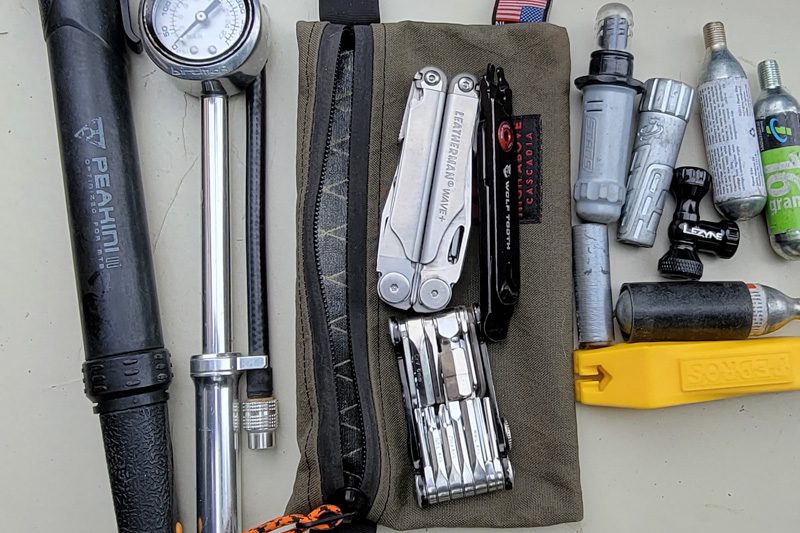
A Big Ride Day
This is for the full day rides, but within reach of roads. This is the ride where you need to plan on getting back to the trailhead on your bike because it’s too far to walk. Managing mechanicals and energy level is essential. In many cases, you will have access to cell reception and there are likely roads nearby for evacuations.
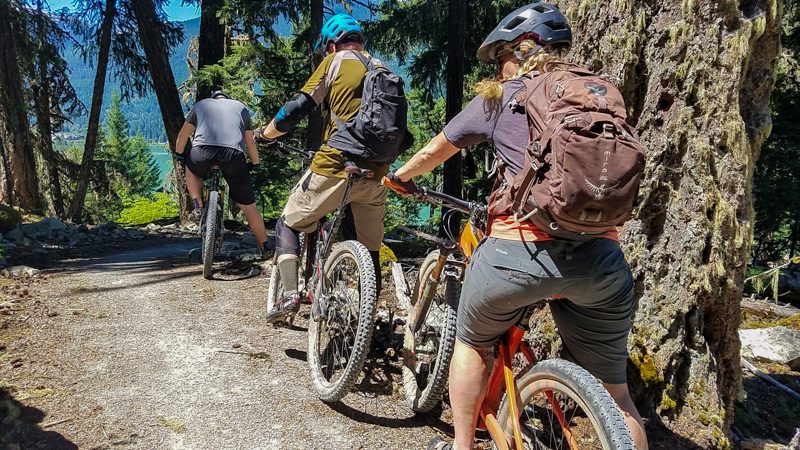
The Pack – This pack should be bigger than the quicky. Some hip packs are able to host a 1.5L water bladder and have storage for everything else. However, a heavy hip pack will make your lower back ache on a long ride. In general, you will want to move into the backpack hydration format for a big MTB day. A lightweight option that can hold 2L plus a jacket is ideal. After you have your pack add everything from the Quicky ride plus these recommendations:
Self Care:
- More water. Plus add an electrolyte tab for either flavor or salt.
- More food.
- Add a space blanket, triangle bandage, tape, larger abrasion pad to the first aid kit.
- If the weather is easy, it’s still a good idea to have a rain shell in the pack. This can serve as a warm layer, sunshade, or actual rain/wind guard which can be welcome on a descent. If you have water crossings, fresh socks can be a welcome treat for the second half of the ride.
- If it’s wet, pack a second pair of gloves in a waterproof bag.
- Clear lense for mud.
Bike Care:
- A spare tube – you will be glad you have it when you can’t get your bead to set, or you run out of plugs.
- Tire pump
- More CO2s
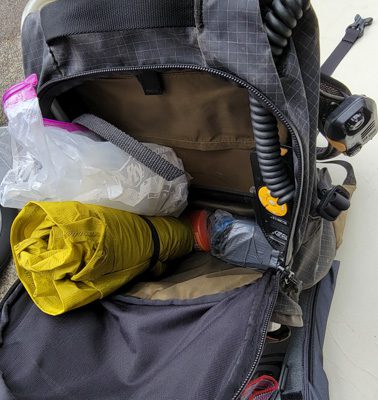
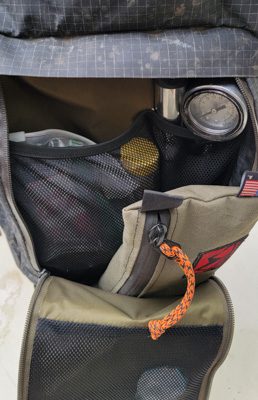

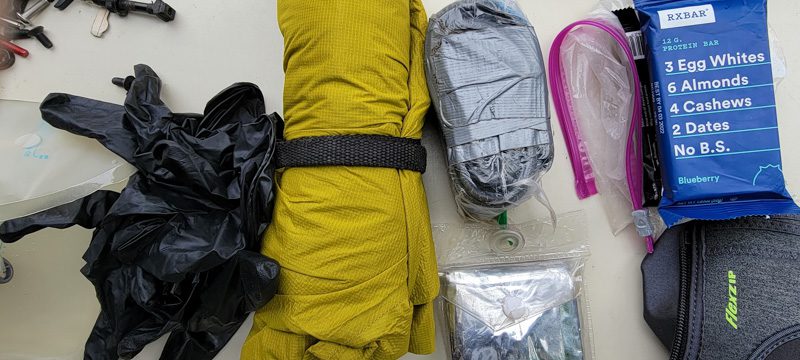
Wrap your spare tube in a plastic bag then again in duct tape. This will keep the tube healthy until you need it, and you can also repurpose the tape in a pinch.
Depending on where you are riding, clear lenses may be essential. Save space by getting glasses with interchangeable lenses and keep the clear in a soft bag that can double as a cleaning cloth.
The Epic
This is for the ride you need to plan for many variables, away from help, cell and re-fuel.
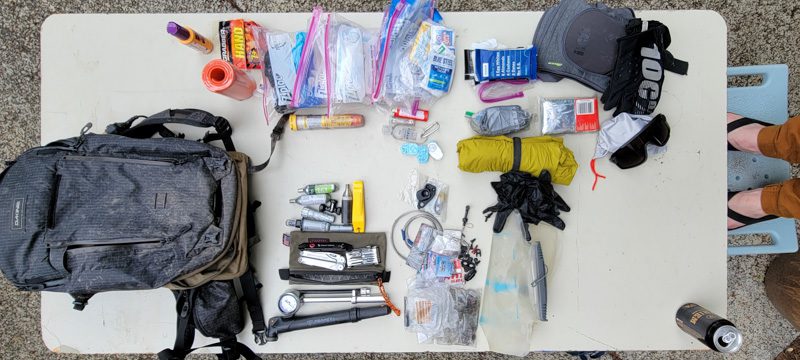
The pack. Large, comfortable, and reliable. In addition to the above lists, you want to add:
- More water. 3L in the pack and 2L on the bike is the max most can carry and still ride comfortably.
- Water purification plan. This is certainly location dependent, but consider taking a filter, UV or tablet purification system.
- More food. While the Quicky and Big Rides are within an effort level that you can plan somewhat light plus a little extra, for the epic you need to maintain and refuel. Bring extra bars and gels, take a big burrito, leftover pizza, or some other energy packed wrap.
- Dress for the known weather, then add the rain shell, a thermal layer, extra gloves. A sun shirt with a big hood can be a big help for long days in the sun and packs small.
- Full first aid kit. Make sure you have mole skin.
- Sunblock, Chapstick, extra packet of Chamois Cream
Bike Care:
- Spare Parts. Chain links, dérailleur hanger, couple spare M4 and M5 bolts, SPD cleat bolt, spare shift cable, valve core
- Shock pump.

Other considerations when packing for the epics.
- Before departing, compare packs with everyone you are riding with. It might not be necessary for everyone to carry everything, and it’s also a good idea to share the weight when you are pushing the boundaries. 1 water filter is plenty for several people, 1 shock pump, 1 extra big first aid kid, etc.
- Communication. When you are out of cell, what is your backup plan? The Garmin Inreach is a great safety to keep in the pack. Satellite phones are not in most rider’s kits but are essential for some of the more remote destination. 2‑way radios can also be useful when your group is spread out.
- A ride plan with someone back home watching for the planned contacts with a backup plan in the event you don’t get out of the woods as scheduled.

